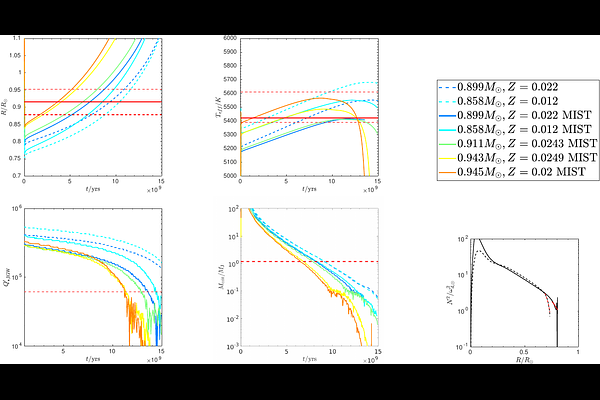The Orbit of WASP-4 b is in Decay

The Orbit of WASP-4 b is in Decay
Ö. Baştürk, A. C. Kutluay, A. Barker, S. Yalçınkaya, J. Southworth, K. Barkaoui, A. Wünsche, M. J. Burgdorf, M. Timmermans, E. Jehin, J. Tregloan-Reed, R. Figuera Jaimes, T. C. Hinse, B. Duru, J. Hitchcock, P. Longa-Peña, S. Rahvar, S. Sajadian, M. Bretton, S. O. Selam, M. Gillon, M. Bonavita, G. D'Ago, M. Dominik, U. G. Jørgensen, C. Snodgrass, P. Spyrato
AbstractWASP-4 b is a hot Jupiter exhibiting a decreasing orbital period, prompting investigations into potential mechanisms driving its evolution. We analyzed 173 transit light curves, including 37 new observations, and derived mid-transit timings with EXOFAST, forming the most extensive TTV dataset for this system. Adding 58 literature timings and removing unreliable data, we constructed a TTV diagram with 216 points. Our analysis considered linear, quadratic, and apsidal motion models, with the quadratic model proving to be significantly superior in all model comparison statistics. We found no significant periodic signals in the data. The quadratic model allows us to infer a tidal quality factor of Q' ~ 80,000 from the orbital decay rate if this is due to stellar tides. Theoretical considerations indicate that such efficient dissipation is possible due to internal gravity waves in the radiative core of WASP-4, but only in our models with a more evolved host star, possibly near the end of its main-sequence lifetime, and with a larger radius than the observed one. Our main-sequence models produce only about a third of the required dissipation (Q' ~ 200,000 - 500,000). Therefore, the observed orbital decay can only be explained by a slightly larger or more evolved host, resembling the case for WASP-12. Our findings highlight the need for further stellar modeling and improvement in our current understanding of tidal dissipation mechanisms driving orbital decay in close-in exoplanetary systems.